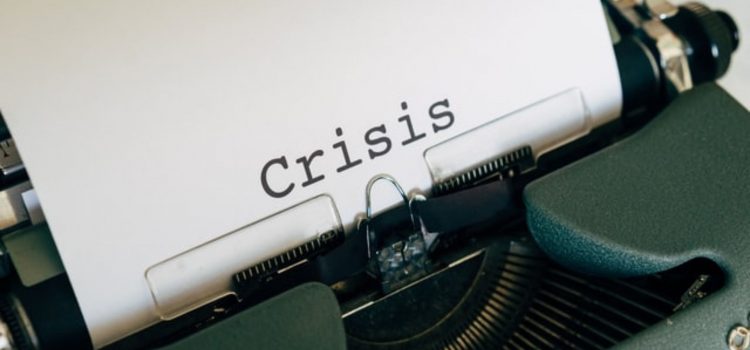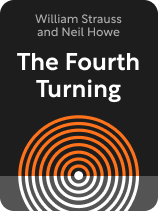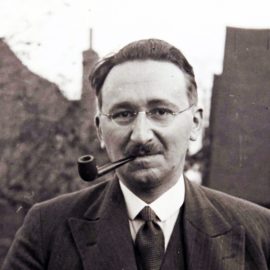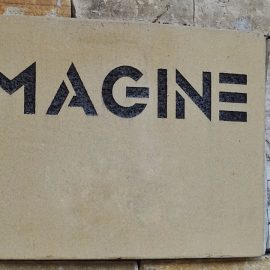

This article is an excerpt from the Shortform book guide to "The Fourth Turning" by William Strauss and Neil Howe. Shortform has the world's best summaries and analyses of books you should be reading.
Like this article? Sign up for a free trial here.
What is the Fourth Turning? Was the Third Reich a Fourth Turning? How do crises transform nations?
In The Fourth Turning, historian William Strauss and consultant Neil Howe explain how Anglo-American history follows a pattern of four 15- to 25-year periods, called Turnings. The Fourth Turning, they say, is a Crisis.
Continue reading to learn about Strauss and Howe’s theory of the Fourth Turning and their predictions for America’s next one.
The Four Turnings, Explained
What is the Fourth Turning? First, let’s look at Strauss and Howe’s theory of Turnings overall. They explain that each Turning lasts around 15 to 25 years (approximately the length of one of four phases of a human life—childhood, young adulthood, middle age, and elderhood. Each one is defined by the behaviors of the generations passing through them, specifically by how they react to societal changes and events.
According to the authors, the First Turning is a High, the Second Turning is an Awakening, the Third Turning is an Unraveling, and the Fourth Turning is a Crisis.
The Fourth Turning: A Crisis
A Crisis occurs when a catalyst—a major event or series of events that creates a mood shift—ignites a significant change in society. According to the authors, major events can happen in any Turning, but only after an Unraveling do they create a society-wide crisis because the anxious, pessimistic, and pre-cataclysmic mood of the Unraveling primes people to respond in a way that creates a societal upheaval.
These events are the culmination of threats that the nation saw coming but failed to properly prepare for, which creates a panic about the nation’s ability to handle such events. In response to this panic, people begin to unite as communities to establish a new social order that demands collective sacrifice to resolve the nation’s problems. The government is appointed to implement and enforce this social order, usually with mixed results. Still, people are willing to endure the government’s missteps—even catastrophic ones—for the sake of decisive action, which can give inordinate power to poor leaders.
Violence, crime, and income inequality decrease as the Turning progresses. Gender divisions increase again as women and the elderly are expected to leave the workforce to make room for young men. Protectiveness over children is at its highest.
Eventually, the Crisis peaks, and the social order is at its strongest. Though violence at the public level is low, the risk of national violence such as revolution, civil war, and foreign war increases. Leaders characterize foreign enemies and political opponents as immoral and refuse to compromise, and the use of highly deadly or destructive weaponry increases for the sake of decisive victories in war.
As a result of the Crisis, society is unrecognizably transformed, for better or worse. The resolution of the Crisis cements the new social order and results in an end to wars and conflicts via treaties, the punishment of the “losers,” and the renewal of public life.
| The Third Reich: A Fourth Turning in Germany? While the authors focus on Anglo-American history, readers may note some similarities between the descriptions of the Fourth Turning and events that occurred in other countries, such as the rise of the Third Reich and the Nazi party. The harsh penalties imposed on Germany in the Treaty of Versailles after World War I created an atmosphere in Germany that was rife for exploitation by a leader like Adolph Hitler. The country was forced to pay reparations so large that its currency became practically worthless, and economic hardship spread throughout the populace. People placed the blame for their suffering on the country’s democratic government and on groups like the Jewish community, leading to both a strong distrust of the government and extremist and nationalistic beliefs that set the stage for the Holocaust’s horrific human rights abuses and genocide. The atmosphere was now right for a Crisis, and the Depression of 1929 served as the catalyst, propelling the nation into the embrace of the authoritarian Nazi party and Hitler, who promised to restore Germany to its former glory. In keeping with the authors’ descriptions of a Fourth Turning, people were willing to put aside individual rights for the sake of collective duty. They were also willing to accept poor leadership and heavy collateral damage for the sake of returning to their pre-World War I status. Women were cast as inferior to and subservient to men, and groups viewed to be harmful to children, such as the Boy Scouts, were banned and replaced with the Hitler Youth. Ultimately, by painting their chosen enemies as purely evil and deserving of extermination, the Nazi regime succeeded in murdering more than 10 million people and created a nation that was unrecognizable from what it used to be. Since this Crisis in Germany coincided with a Fourth Turning in America, analyzing saecular Turnings in the context of larger global conflicts may yield greater insights than studying them exclusively in one culture or nation. |
Predictions About the Next Crisis
The authors predicted that the Fourth Turning—a Crisis—would begin within the first few years of the 21st century, around 2005. Because the catalysts for a Fourth Turning are always foreseeable based on the trends that are established during the Unraveling, the authors make a handful of predictions about what the next catalyst might look like:
A terrorist attack by a foreign group purporting to have nuclear weapons, leading the US to declare war and begin searching people’s homes. Suspicions that the president fabricated the event would lead to a nationwide strike and the loss of foreign capital.
A new, highly contagious virus spreads, resulting in significant deaths and causing the government to create and enforce quarantines. The National Guard is deployed to isolate areas hit hardest by the disease, and the president is pressured to declare martial law.
Conflicts in and around Russia result in civil wars and the capture of American diplomats, leading the US to send ships into the Black Sea and Congress to consider reinstating the draft.
The authors note that these exact scenarios are unlikely and that, whatever does happen, the nation will be able to mitigate it before it becomes truly devastating. However, it will arise from some problem that the country had failed to deal with soon enough, which will spark outraged calls to action.
After the Catalyst
As a result of the catalyst, the authors predicted that people would lose all faith in the government, struggle financially and begin to panic about their future and that a recession or depression may occur. People will have to form a new social order, peacefully or otherwise.
One political party will achieve a decisive win early in the Crisis and will maintain its power throughout the Turning. Its leaders will exaggerate and deliberately exacerbate the country’s problems to accelerate change and enact a more and more extreme agenda.
At the beginning of the Turning, income inequality will stop growing. Toward its end, the economy will begin to recover and may become stronger than ever. It will be more unionized and more independent from the global economy. The public will again trust the nation’s institutions and demand that they restrict choices by standardizing certain options in goods and services and by establishing a single dominant political party to relieve people of the onus of having to choose.
The rights of certain groups will come under attack by powerful organizations. Criminal justice will become increasingly harsh, and the harming of innocent people will become acceptable collateral damage for protection against those considered dangerous to society.
Through some combination of larger conflicts, the nation’s issues will coalesce into one large problem that forms the climax of the Crisis. People will unify around this problem, setting aside differences for the purpose of healing the nation and putting it on track for a new rebirth in the upcoming High. Whether the results of the Crisis’s resolution are positive or negative, the nation will be unrecognizable from what it was at the beginning of the Crisis.
(Shortform note: A possible downside of recognizing the pattern Strauss and Howe describe is that people and leaders may be tempted to push the nation toward deliberate disaster in order to hasten the post-Crisis High by exaggerating and worsening the nation’s problems. Some accuse leaders of right-leaning political parties around the world of actively pushing for conflicts to happen for this purpose, calling such an approach disaster nationalism—the promotion of conflict to pave the way for authoritarian leadership in response.)

———End of Preview———
Like what you just read? Read the rest of the world's best book summary and analysis of William Strauss and Neil Howe's "The Fourth Turning" at Shortform.
Here's what you'll find in our full The Fourth Turning summary:
- How Anglo-American history follows a pattern of four 15 to 25-year periods
- How the behaviors of different generations define these Turnings
- Predictions about the next Turning—a Crisis






